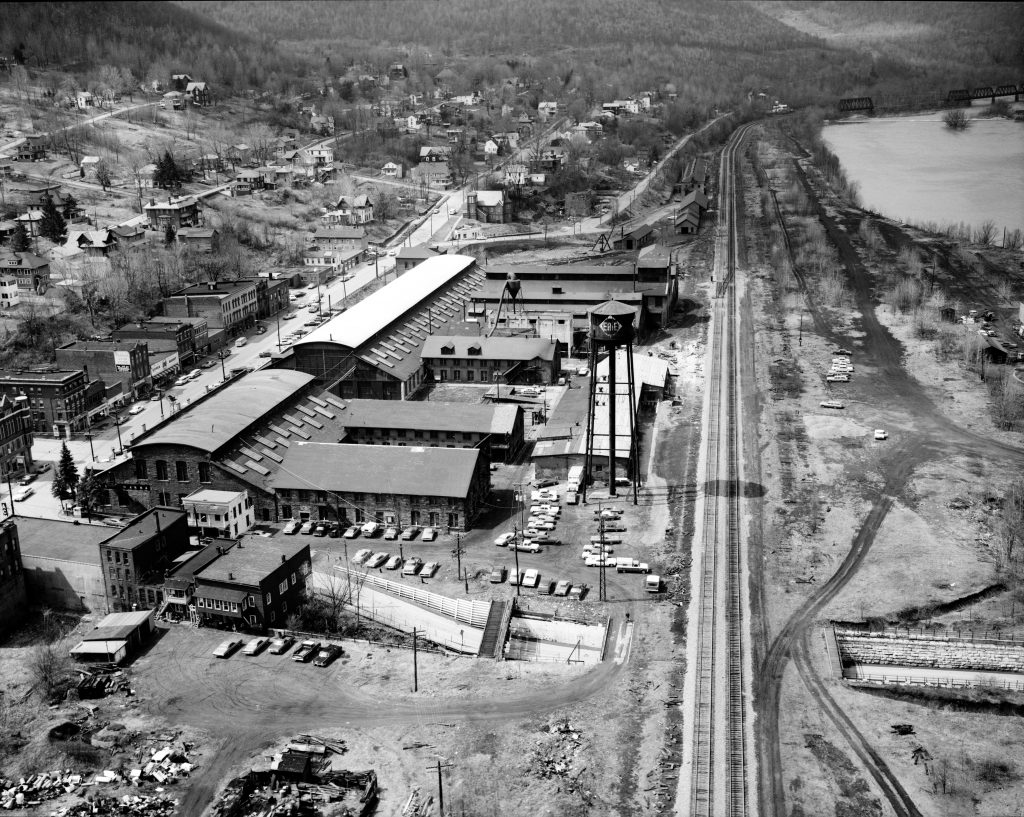My name is Sebastien Hardinger and I am a Master’s student in the Public History program at Northeastern University. As part of my internship with the Everhart this summer, I worked with Museum staff to begin mapping specimens from the Everhart’s Herbarium.
The Everhart’s Herbarium, a collection of plants, was collected by Alfred Twining (1856-1922) mostly from Northeastern Pennsylvania around the turn of the 20th century. Twining, the editor of the Scranton Times, collected plants as a hobby.

The Twining collection, and later plants added to the Museum’s Herbarium, were labeled with where they were found. My goal was to geolocate the locations associated with each specimen, and whenever possible finding the exact latitude and longitude coordinates that correspond to listed locations. Finding these coordinates would allow the herbarium to be mapped, and expand the ways that the Museum’s collection would be able to be utilized in the future.
These labels varied widely in their specificity and utility. Some were very specific and easy to map, such as the address “1414 Swetland St. Scranton.” Others were very specific, but in a way less useful for finding coordinates, such as “Damp woods on slope about Little Mild Pond, 4 miles East Northeast of Porter Lake, Pike County.” Other locations related to places that no longer exist today, such as “near Virginia station, Laurel Line.” And many simply related to geographical features, such as the “Susquehanna River.” Out of approximately 1,770 pieces in the Herbarium, I was able to find coordinates for roughly 1,550.
As might be expected, Twining focused his collecting efforts in his home region of Northeastern Pennsylvania and so the vast majority of the collection focused on this area. However Twining did collect pieces from as far West as Port Huron, Michigan, and as far south as Miami, Florida, as can be seen in the map here.

Within Northeast PA, Twining focused his collecting in the Scranton area. But other parts of the Northeast were frequent collection sites — the Susquehanna River was a particular focus, as well as the Poconos and the lakes in the far Northeast. Collecting around the turn of the century, Twining relied on railroads to travel, and a map of his collection shows that he often collected along the rail lines of Northeastern Pennsylvania, as pictured below.

Below you can view a more zoomed in version of the map, focusing on the area around Scranton. This shows that Twining collected widely around the town. A few pieces of the collection were even found in Nay Aug Park, where the Everhart stands today.
The specimen labels also note the date that each specimen was collection and I was able to graph this data as well. The chart here illustrated that most the Everhart’s Herbarium specimen were collected during the summer months, specifically June, July, and August. Very few pieces were collected before March or after October.

Although Twining collected throughout his life, most of the specimen that Twining donated to the Museum were collected between 1900 and 1903. Twining donated his collection to the Everhart Museum in 1913. Twining was in his late sixties by the time he finished cataloguing his collection and published a catalogue of its contents in 1917.
Between 1917 and his death in 1922, only a few new pieces were added to the collection. Perhaps Twining considered his work complete, or perhaps health made him unable to continue.

Though the collection primarily dates from the turn of the 20th century, in the late 1930s there was a renewed collection effort during the 1900s. Several hundred pieces were added to the collection between 1936 to 1940, and more pieces have been added in the years since.
All of the maps and graphs included in this post were completed using Tableau as well as a full digital database of the Herbarium itself. It is my hope that the work I completed during my summer internship will be the first step for future work on the collection to be done.
Written By Sebastien Hardinger, Programs Intern, Summer 2020 Cohort.


